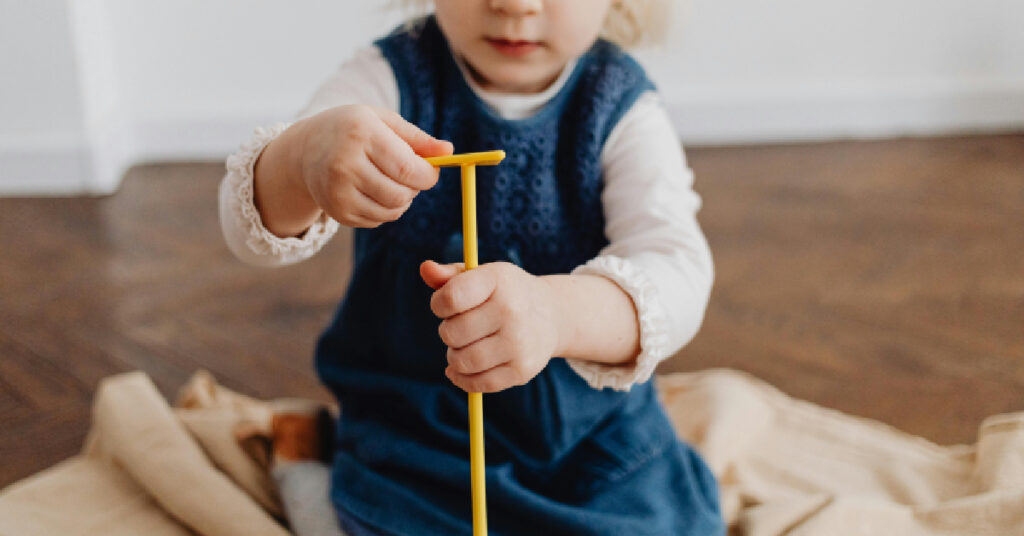
15 Best Toys for Building Independence — That Aren’t Boring or Overhyped
From magnetic tiles to dolls and pretend kitchens, these 15 toddler toys are actually worth the shelf space — and designed to encourage solo play and confidence.
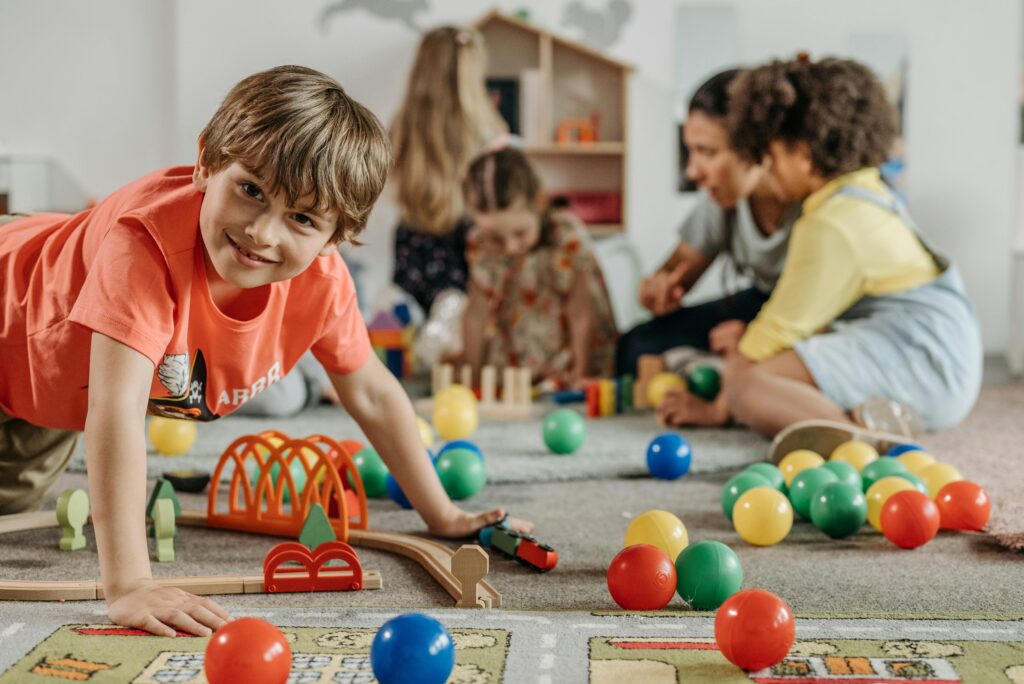
If you’re Googling how to start independent play, you’re probably running on cold coffee and desperate for five minutes without someone yelling “Muuuuum!” Independent play sounds amazing in theory, but when your toddler needs you to narrate every moment of their day, it feels impossible.
This post breaks down exactly how to start independent play with toddlers in a way that’s real-life friendly, low-pressure, and actually doable in the middle of your daily chaos. No Pinterest-perfect setup. No new toys required. Just simple shifts that make a big difference.
Because let’s be honest. You deserve a break, and your toddler deserves the confidence that comes from learning how to play without constant direction.
Knowing how to start independent play gives your child the space to grow into a confident, creative little human. And yes, it gives you space too. Like actual breathing room.
Here’s why it’s worth it:
Confidence – When your child leads their own play, they learn to trust their instincts
Creativity – Open-ended, self-led play helps toddlers stretch their imagination
Focus – Kids who play independently learn to stay with a task longer
Emotional regulation – They learn to work through boredom and frustration
Less screen time – Independent play becomes a healthy alternative to constant stimulation
The best part? You don’t need to overhaul your entire routine. You just need to know how to start independent play in small, consistent ways.
Read More: The Incredible Benefits of Open Ended Play for Toddlers (Backed by Science + Real Life)
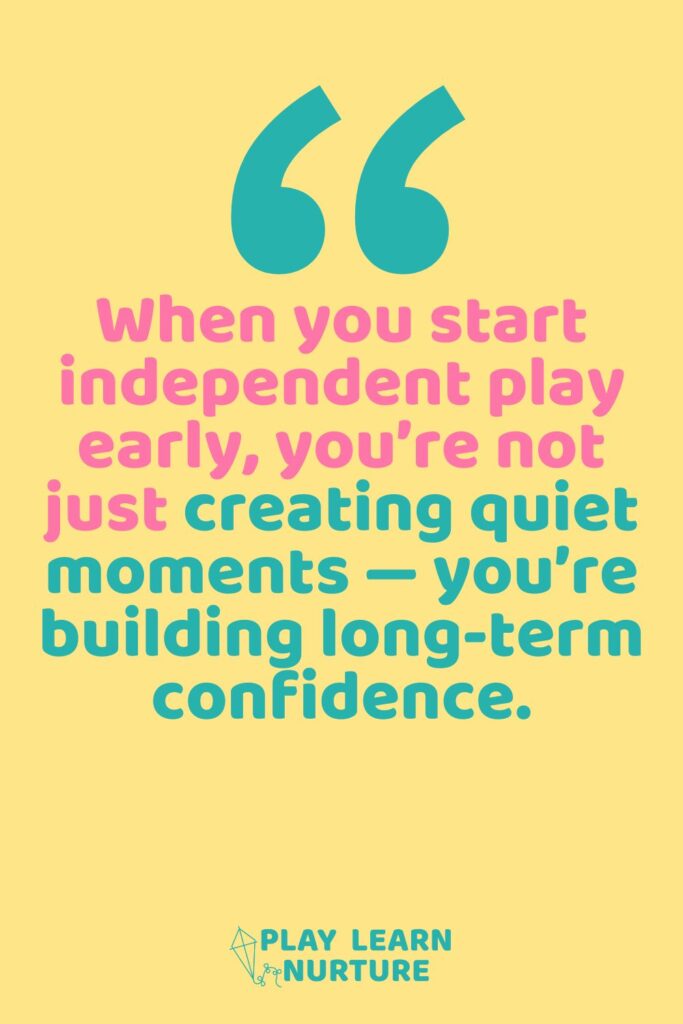
Let’s bust the myth right now. Independent play does not mean your toddler is sitting quietly, building towers for 30 minutes while soft classical music plays in the background. If that’s your expectation, scrap it.
Real independent play is loud. It’s messy. It often involves the same toy being driven into a wall fifteen times while your child narrates every crash. And yes, that counts.
When learning how to start independent play, it helps to know what’s realistic for your child’s age.
| Age | Play Time | What It Might Look Like |
|---|---|---|
| 12–18 months | 2–5 mins | Dumping toys, mouthing, banging objects |
| 18–24 months | 5–10 mins | Stacking, pretend phone calls, pushing cars |
| 2–3 years | 10–20 mins | Simple pretend play, building, repeating activities |
| 3–5 years | 20–45 mins | Complex storytelling, solo setups, role-playing games |
Every toddler is different. What matters is starting small and building up gradually. There’s no magic number of minutes, no perfect style of play. Just progress.
Read more : Independent Play by Age: What’s Realistic at 1, 2, 3, 4, and 5?
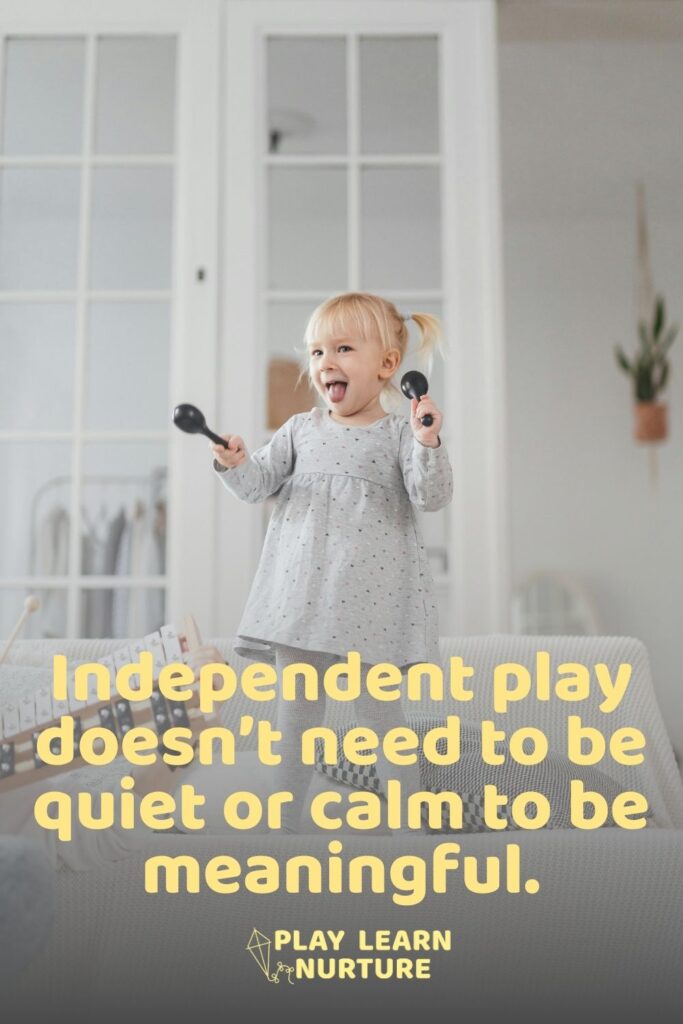
Okay. So you’re sold on the benefits. You know it won’t look perfect. Now let’s talk about how to actually do it.
Here’s your no-fluff, real-mum-approved guide on how to start independent play even if your toddler has never played solo in their life.
Set your bar low. Like “they played alone for two minutes while I stood nearby and fake-texted” low.
That’s a win. That’s the starting point.
If you’re wondering how to start independent play, this is it. Start tiny. Set a timer if it helps you both. Gradually stretch it out over time.
Your toddler might need to know you’re nearby. That’s totally normal. Sit on the couch. Scroll your phone. Fold laundry. Whatever works.
Just don’t lead or direct the play.
Let them know this is their space, their time, and they’re in charge of what happens with the blocks or dolls or cars.
If you’re learning how to start independent play, open-ended toys are your best friend. These are toys that can be used in more than one way and don’t have built-in instructions or scripts.
Some favourites:
Magnetic tiles
Blocks
Cars and trucks
Dolls and figurines
Loose parts like pegs, scarves, bottle caps
Play silks or fabric squares
These toys spark curiosity and help toddlers take control of their play.
Need a quick guide: Best Open Ended Toys For Toddlers by Age (1–5 Years)
A cluttered space leads to a cluttered toddler brain. Too many toys can overwhelm them and shut play down before it even starts.
If you’re figuring out how to start independent play, try offering just 2–4 toy options at a time.
Rotate weekly to keep things fresh without buying anything new.
Read More: Coming Soon – Minimalist Toy Guide: Essentials for Open-Ended Play
Independent play works best when it’s expected. Add it to your daily rhythm — after snack, before nap, or while you prep dinner.
Same time, same setup = comfort.
💡 Coming soon: [Daily Independent Play Routine That Builds Focus and Confidence]
When they start playing solo, avoid jumping in with “Wow, what a tower!” Instead, try “You focused really hard on stacking those blocks!”
You’re reinforcing the skill of staying engaged, which makes independent play stick around longer.
Some toddlers take to independent play quickly. Others need more time. If they play for 90 seconds and then come running to you, that still counts.
The key is to keep showing up for the process, not the performance.
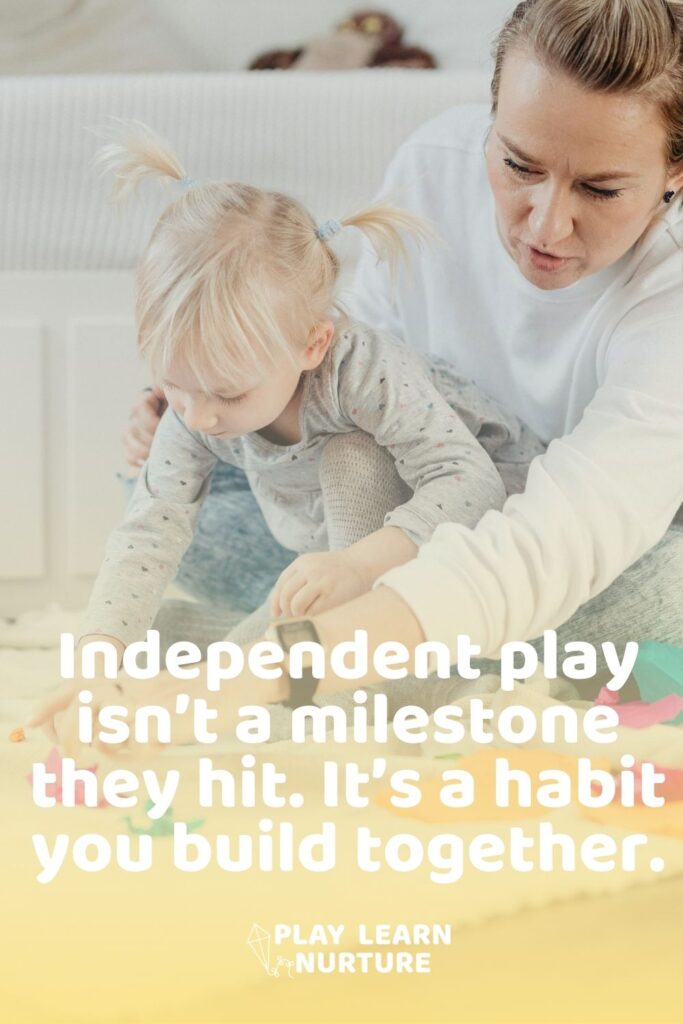
Even with the best intentions, independent play doesn’t always go smoothly. And that’s okay. Here are the most common things that can sabotage your efforts — and what you can do to turn it around.
If your toddler has 32 toys within reach, they’re going to bounce from one to the next without truly engaging with anything. This overload shuts down focus and kills creativity.
Fix: Limit the options. Try offering just a few open-ended toys in an easy-to-access spot. Store the rest out of sight and rotate weekly.
The second they say “Help!” or “I can’t,” you jump in. Totally normal. But this teaches them that play needs adult supervision to continue.
Fix: Pause. Let them feel the discomfort for a moment. If they’re not in distress, wait and watch. Often, they’ll figure it out or switch gears on their own.
It’s easy to look at Instagram and think independent play should last 45 minutes with soothing music and zero chaos. Nope.
Fix: Start with what’s realistic. Even 3–5 minutes counts when you’re learning how to start independent play with a toddler.
This one hits deep. You feel like you’re failing if you’re not engaging 100% of the time. But here’s the truth: independent play isn’t neglect — it’s a gift.
Fix: Reframe it. You’re not “doing less.” You’re creating space for your child to build confidence and creativity on their own.
Some kids just aren’t used to playing alone yet. They might protest or follow you around. It doesn’t mean it won’t work — it just means they need more time and support.
Fix: Keep showing up. Use the same space and time each day. Sit nearby. Encourage any progress, no matter how small.
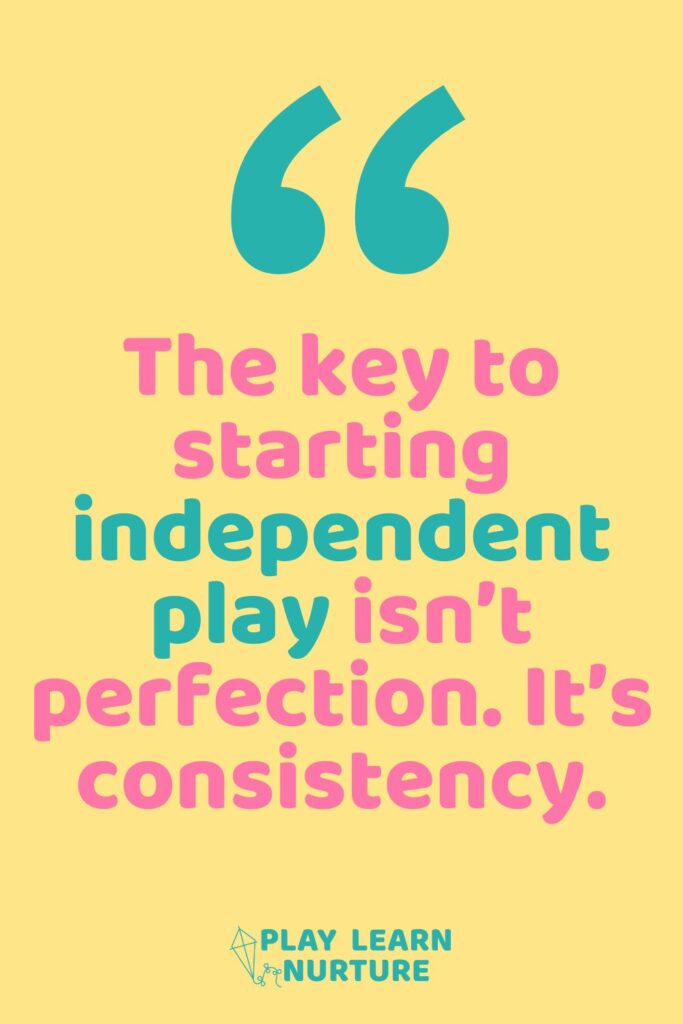
If you’re wondering how to start independent play without buying an entirely new toy setup, here’s the good news: you probably already have what you need.
The best toys for independent play are open-ended, simple, and flexible. They don’t light up, talk, or direct the action. Instead, they invite your toddler to take the lead.
Magnetic tiles – Build towers, walls, garages, and crash zones > Grab my favourite from amazon now
Wooden or plastic blocks – Stack, sort, knock down, build again > Grab my favourite from amazon now
Dolls and animals – Pretend play, storytelling, and role playing > Grab my favourite from amazon now
Toy cars and trucks – Create their own city with pillows, boxes, and ramps > Grab my favourite from amazon now
Loose parts – Pegs, scarves, cups, lids, nature items > Grab my favourite from amazon now
Play silks – Capes, water, picnic rugs, tents, rivers — endless uses > Grab my favourite from amazon now
These toys don’t do the work for your toddler. And that’s the point.
Read More: Coming soon -Minimalist Toy Guide: Essentials for Open Ended Play
Read More: Best Loose Parts Toys for Toddlers: Kits That Grow with Your Child
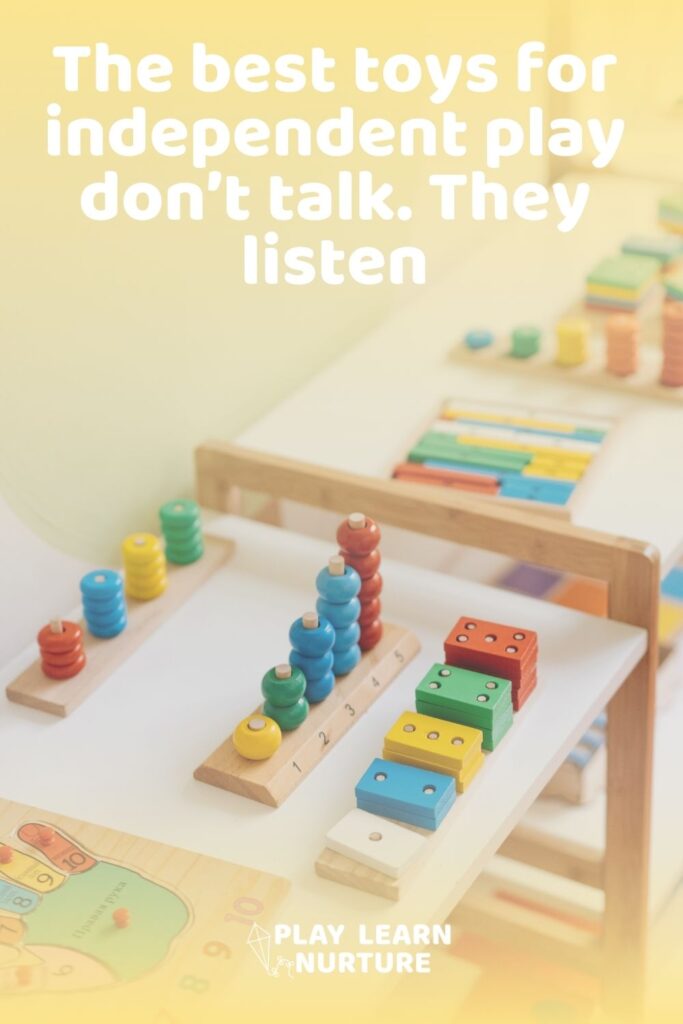
Here’s your real-mum reminder: just thinking about how to start independent play already makes you an intentional parent. You care. You’re trying. That’s more than enough.
Independent play is a skill. It’s built over time, not overnight. It doesn’t have to be perfect, quiet, or even long to matter.
Start where you are. Offer what you have. Celebrate small wins. Then do it again tomorrow.
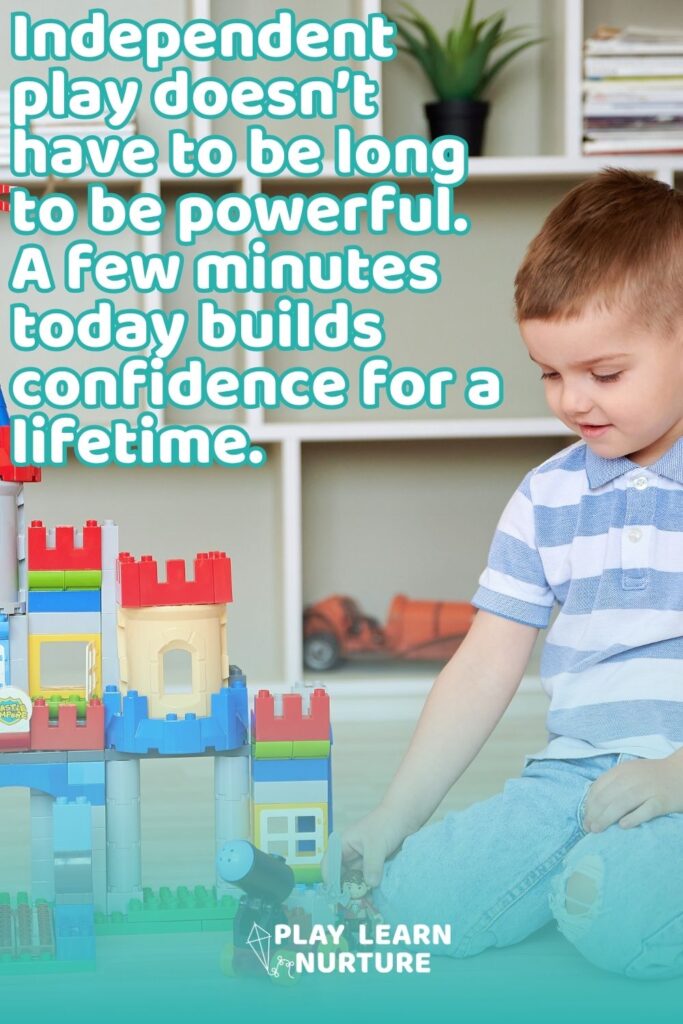
Toddler Independent Play – How to Encourage It plus Open Ended Play
Coming Soon

From magnetic tiles to dolls and pretend kitchens, these 15 toddler toys are actually worth the shelf space — and designed to encourage solo play and confidence.
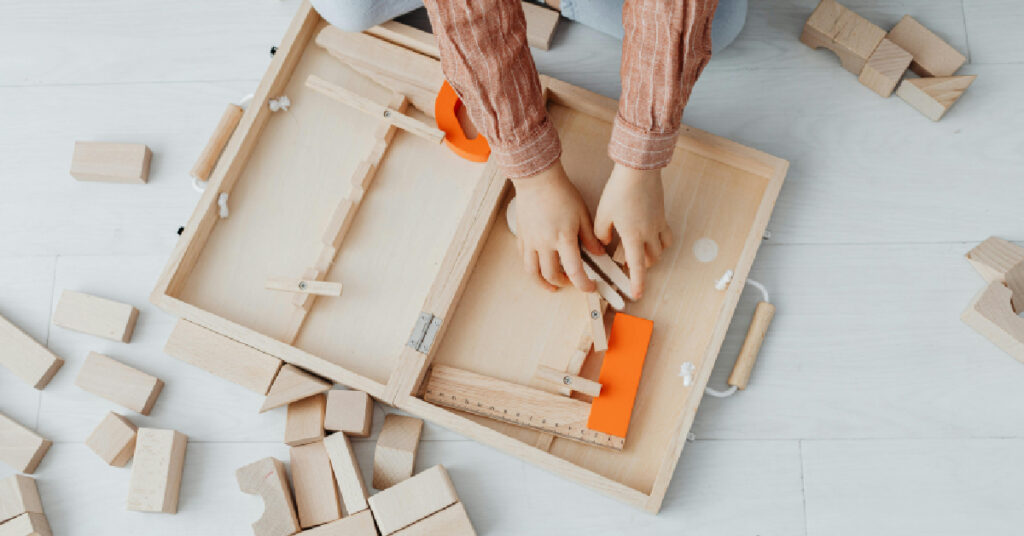
Delve into the world of loose parts play with our selection of toys that inspire exploration and innovation. Perfect for enhancing your toddler’s sensory and cognitive skills.
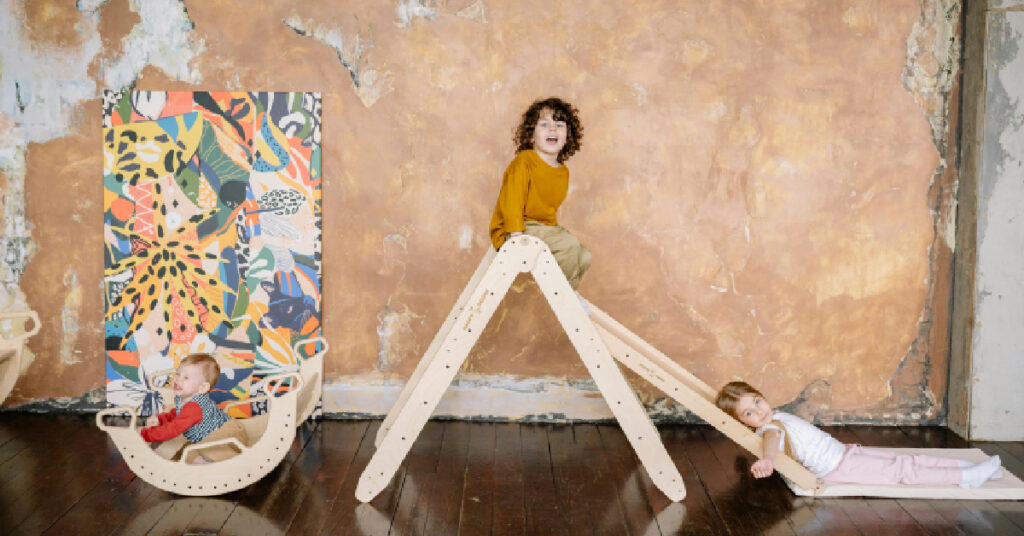
Simple, real-life play space ideas for toddlers that spark imagination, support independence, and give you a moment to breathe — no Pinterest-perfect setup required.

When the milk spills, the toddler tantrums, and your patience snaps before 9AM — you’re not failing. This is one mum’s story of surviving the messy mornings and finding connection in the chaos.
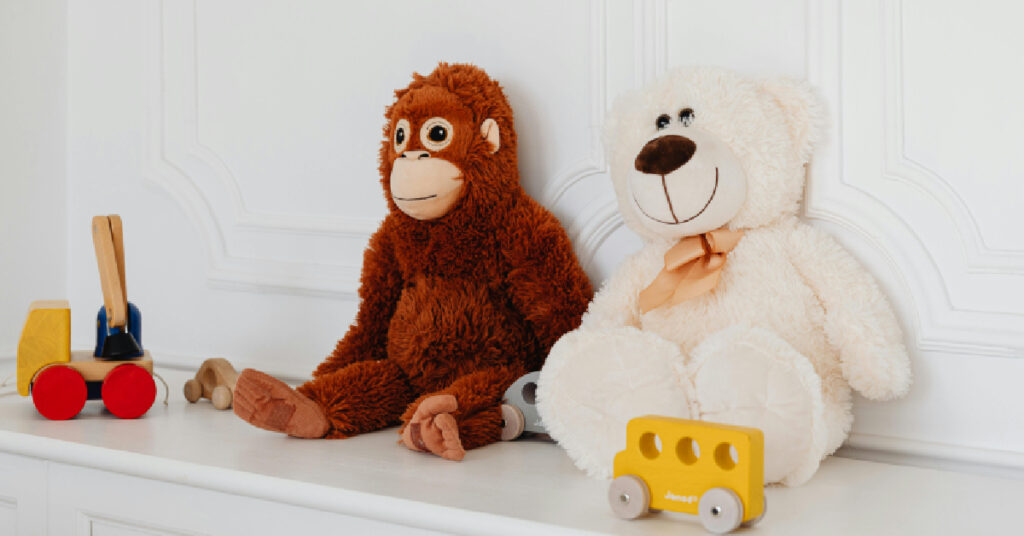
Discover how a simple toddler play schedule can create calmer days, boost independent play, and give you back precious breathing space — no strict routines required.

One chaotic morning, I realised the tension in the house wasn’t just coming from my toddler — it was coming from me. This is the story of how I stopped fuelling the chaos and started checking my own emotional thermostat first.